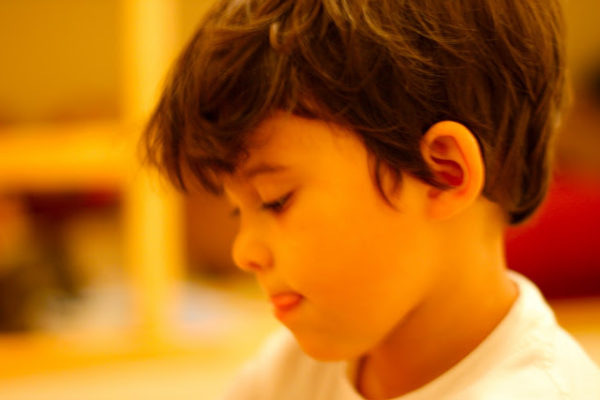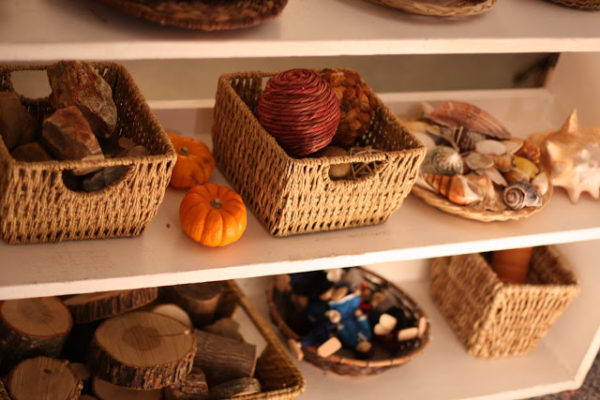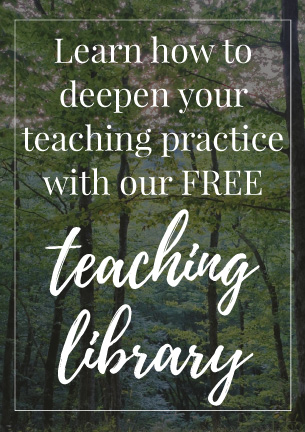We need 4 hugs a day for survival. We need 8 hugs a day for maintenance. We need 12 hugs a day for growth
—Virginia Satir
On the most basic level, the sense of touch (the tactile sense) helps us to define what is self and not self. It is a picture of boundaries. Through touch we find our separateness and our relatedness. Think about touching an object. Your sense of touch tells you something about the object you are touching – its physical qualities. It also tells you something about your own boundaries such as – is this something you welcome? The sense of touch could be called the sense of “trust.” It is in the sense of touch that we learn to trust (or not) the world.
When you really think about it – touch is two-fold: separating and connecting. Touch is one of the most important components of bonding with another person. Positive touch from others is necessary for an individual’s healthy development.
The sensory organ for touch is the skin. Our skin is the largest organ of the body with thousands of sensory cells (nerve endings) that detect pressure/weight, temperature, and pain. Your sense of touch allows you to tell the difference between rough and smooth, soft and hard, and wet and dry, sticky and smooth etc. Your finger tips, lips, and tongue have the most concentration of these nerve endings.
The sense of touch develops before all other senses in embryos and in labor and delivery. It is a primal sense – moving through birth canal – beginning life by touching our mother (canal/breast). It is the fundamental way in which infants learn about their environment and bond with other people. Think of how infants calm down when swaddled and wrapped. The experience of being held and stroked as an infant is critical to growing up with a strong sense of self. The sense of touch gives us a deep feeling of certainty.
It is so interesting that the sense of touch happens through out the entire surface of the skin – like when you sit, lie down, etc – and gives you the quality of that experience; hard, soft, warm, cool and so forth. Researchers have begun to look at how these concepts have given us meanings of relatedness. A child says “I can’t do it, it’s too hard” to say something is difficult. We talk about thin-skinned people, being “tough,” being “touched” by an experience – we use these specific qualities of the sense of touch to describe our relationships.
Through touching, children can feel a loving connection to their environment. It has been said that the fingers are the “ten hearts” and that the heart is the 11th finger. This points to the powerful impact of what touches our children. It is so deeply connected to the function of love. When a child experiences the world with touch – they are experiencing the world with love. It is also interestingly to consider the “trigger” finger and how we say “no” to the young child’s exploration of the environment by shaking our finger or spanking. This points to the value of redirection vs. saying “no” to the young child.
It is important to educate children in a way that provides them with a secure sense of touch. Healthy touch gives the growing child a sense of security and builds self-esteem. It is important to touch every child every day in the way they need it (being mindful of tactile defensive children).
The experience of touch in the classroom – the subtle experiences such as wood vs. plastic. Providing as natural as possible an environment give children a rich palette of touch. It is important to have real cotton, silks, wood, bees wax, handmade items in the classroom. This truth of materials (wood over plastic) educates a child’s sense of awe and respect.
- Find natural and healthy points of meaningful touch in the classroom. I stand at the door each morning to greet each student. I give them a pat or hug depending on their lead. I always let the child chose the hug. The most important thing is that they receive a loving, joyful touch of welcome. “I rejoice that you are here!”
- When we wash our hands or use sanitzer, I gentle hold their hands as I give them the soap. It is these small gestures that provide a deep sense of safety.
- Children do not have many opportunities to learn how to touch appropriately. We are living in a touch-fear society. We can help this by doing circle games, dancing, and other activities that require hand holding.
- When a child hurts another child – it is deeply healing for them to hug or touch lovingly the child who has been hurt. This is far more powerful than the standard “I am sorry.”
- I strive to provide a wide range of textures and surfaces in our classroom – for centers, art projects, and exploration. These help inform the ever deeping sense of touch. I feel it will give children a deep sense of comfort about the process of learning. This is a gift for life.
- Children with tactile problems can be touch sensitive (avoid touch) or hyposensitive (seek touch). A rich touch environment can help these children.
- It is important not to touch the back space of children who are tactile defensive.
- Children who are nervous need to be held tightly to feel the boundary of self.
- Touch releases the hormone Oxytocin which is calming. Rhythmical touch reduces anxiety and depression (think hand clapping games that children love to play).
There is so much to say about the sense of touch. It is a foundational sense to being a healthy human being. I think that the current wave of pushing down the academics and the heavy use of worksheets frightens me when we consider it in terms of touch. There is a reason that early childhood is play-based. It is touch-based. Children love the world through touch – they learn the world through touch.







I love, love, love it Sally, love the post, love the season of love, love the red, it’s all so embracing, love the hugs! I thought it was fourteen hugs a day?!
Thank you,it is such a pleasant visit over here.
What a lovely article. As a massage therapist, I agree completely. So many of us are deprived of basic daily touch…..and by the time they reach my table they are desperate for it. That’s why, in my opinion, we are therapists…..not just because we heal muscles….but because we help to heal emotions too. Some people might cry on the table. Others open up the floodgates on everything they are struggling with. It’s so great to hear that you are encouraging touch in the classroom….that is something that will stay with them all their lives.
Love your post and your shelves. My sons love to touch and to feel and hold all of the items on our shelves too. Will have to add more things to appeal to their tactile needs and wants, though, as your shelves are such an inspiration. Just love reading your blog and your posts.
Have a happy weekend,
Colleen:)
I am going to send this to a friend of mine. She had started a blog at one point along the lines of a hug-o-meter, and as an effort towards healing, perhaps. I wonder if she still has it come to think of it… Thanks for sharing the information, and for adding me, I just noticed, to your list 😉
Love the shelves.
Sally, thanks so much for this series. I am presently struggling with “standing up for” my firm beliefs regarding early childhood and what is appropriate discipline (ie, I do not spank, I try very hard not to yell) — I am living temporarily with my parents and get daily lectures about the way I discipline (or, as they see it, don’t discipline) my one and two year olds. At least ten times each day I have to drag my babies away from the TV cables, kitchen cupboards (pots and pans), etc because my parents don’t want them getting into these things. I try explaining that these things, this environment, are new to them and they are naturally curious. Also, my two-year-old is struggling with a lot of pushing, pinching, hitting his younger brother. My response, each time, is to comfort the baby and then sit apart with the older one until he feels ready to show soft, kind touches to his brother. My parents expect me to spank. I will not. Thank you for re-confirming my choices as a parent — I look forward to reading more! +Chelsea
Chelsea, it is a challenge to live in a home with the ideas of another generation. I dealt with this myself when raising my children and now, as an educator. My children are now 20, 27, and 28 and I would not change a thing. My compassionate parenting produced very compassionate human beings. There are some great resources out there for compassionate parenting – like non-violent communication and the work of Dr. Becky Bailey for educators (worth reading as a parent).
I just had to take this moment to acknowledge you for standing up for what you know to be best for your children. It takes courage. Love requires a courageous heart. You inspire me in this season of love!
Hugs,
Sally
Hi Sally!! I love this post!! My princess LOVE to touch and feel everything!! I love your shelve and the idea to add some nature thing for her to have another experiences in the sensorial way…I will added!!! Thanks soooo much for this ideas and for the lovely post!!!
Hugs from Puerto Rico!